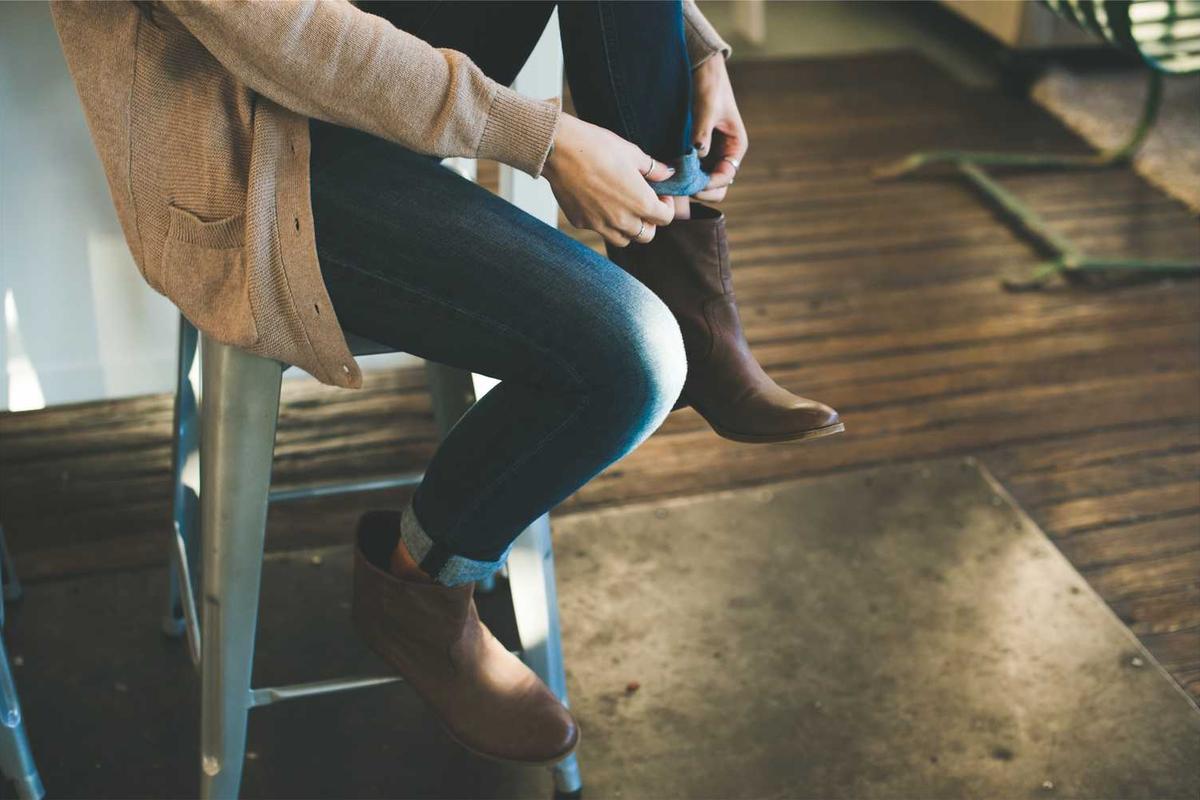Color Analysis and Coordination: Complete Guide
Discover your perfect color palette and master the art of color coordination with professional techniques for creating harmonious, flattering outfits.

Color is one of the most powerful tools in fashion, capable of transforming your appearance, enhancing your natural features, and creating sophisticated, harmonious outfits. Understanding color theory, discovering your personal color palette, and mastering coordination techniques will elevate your style and simplify your daily dressing decisions.
Understanding Color Theory in Fashion
Before diving into personal color analysis, it's essential to understand the fundamental principles of color theory and how they apply to fashion and personal styling.
The Color Wheel Foundation
The color wheel is your roadmap to understanding color relationships:
- Primary Colors: Red, blue, yellow - the foundation of all other colors
- Secondary Colors: Orange, green, purple - created by mixing primary colors
- Tertiary Colors: Red-orange, blue-green, etc. - primary and secondary combinations
- Warm Colors: Reds, oranges, yellows - energetic and advancing
- Cool Colors: Blues, greens, purples - calming and receding
Color Properties
Every color has three key properties that affect how it looks on you:
Hue
- Definition: The pure color itself (red, blue, green)
- Warm vs. Cool: Every hue has warm and cool variations
- Personal Harmony: Some hues naturally complement your coloring
- Seasonal Association: Certain hues are linked to seasonal palettes
Saturation (Intensity)
- Definition: How pure or muted a color appears
- High Saturation: Bright, vivid colors that demand attention
- Low Saturation: Muted, dusty colors that are more subtle
- Personal Match: Your natural coloring determines optimal saturation
Value (Lightness)
- Definition: How light or dark a color appears
- Tints: Colors mixed with white (pastels)
- Shades: Colors mixed with black (deep colors)
- Contrast Consideration: Your natural contrast guides value choices
Personal Color Analysis
Determining Your Undertones
Your skin's undertones are the key to finding your most flattering colors:
Warm Undertones
- Characteristics: Golden, yellow, or peachy undertones
- Vein Test: Veins appear greenish in natural light
- Metal Preference: Gold jewelry looks more flattering
- Sun Response: Tends to tan rather than burn
- Best Colors: Warm reds, oranges, golden yellows, warm greens
Cool Undertones
- Characteristics: Pink, red, or blue undertones
- Vein Test: Veins appear blue or purple in natural light
- Metal Preference: Silver jewelry looks more flattering
- Sun Response: Burns easily, tans with difficulty
- Best Colors: Cool reds, blues, emerald greens, true whites
Neutral Undertones
- Characteristics: Balanced mix of warm and cool
- Vein Test: Veins appear blue-green
- Metal Preference: Both gold and silver look good
- Flexibility: Can wear both warm and cool colors
- Best Colors: Wide range, focus on intensity and value
The Seasonal Color System
Based on your undertones, contrast level, and natural coloring intensity:
Spring Palette
- Characteristics: Warm undertones, light to medium coloring, bright clear colors
- Best Colors: Coral, peach, golden yellow, clear blues, warm greens
- Avoid: Black, pure white, muted or dusty colors
- Metals: Gold, copper, warm metallics
- Celebrities: Emma Stone, Scarlett Johansson, Blake Lively
Summer Palette
- Characteristics: Cool undertones, light to medium coloring, soft muted colors
- Best Colors: Soft blues, lavender, rose, sage green, powder pink
- Avoid: Bright orange, warm browns, intense colors
- Metals: Silver, platinum, white gold
- Celebrities: Taylor Swift, Reese Witherspoon, Gwyneth Paltrow
Autumn Palette
- Characteristics: Warm undertones, medium to dark coloring, rich earthy colors
- Best Colors: Burnt orange, deep browns, olive green, burgundy, golden yellow
- Avoid: Icy colors, bright pinks, cool blues
- Metals: Gold, bronze, copper, warm metallics
- Celebrities: Jennifer Lopez, Julia Roberts, Anne Hathaway
Winter Palette
- Characteristics: Cool undertones, high contrast, bold clear colors
- Best Colors: True red, royal blue, emerald green, black, pure white
- Avoid: Warm browns, muted colors, golden tones
- Metals: Silver, platinum, white gold
- Celebrities: Lupita Nyong'o, Anne Hathaway, Sandra Bullock
Advanced Color Coordination
Color Harmony Schemes
Create sophisticated color combinations using proven harmony principles:
Monochromatic Scheme
- Definition: Different shades, tints, and tones of one color
- Effect: Elegant, sophisticated, elongating
- Example: Navy blazer, light blue shirt, denim jeans
- Tips: Vary textures and values for interest
- Best For: Creating sleek, polished looks
Analogous Scheme
- Definition: Colors next to each other on the color wheel
- Effect: Harmonious, natural, soothing
- Example: Blue, blue-green, and green
- Tips: Choose one dominant color, use others as accents
- Best For: Creating gentle, flowing color transitions
Complementary Scheme
- Definition: Colors opposite each other on the color wheel
- Effect: High contrast, vibrant, energetic
- Example: Red and green, blue and orange
- Tips: Use one color as dominant, the other as accent
- Best For: Making bold, confident statements
Triadic Scheme
- Definition: Three colors equally spaced on the color wheel
- Effect: Balanced, vibrant, dynamic
- Example: Red, yellow, and blue
- Tips: Use one as primary, others as accents
- Best For: Creating playful, confident looks
Practical Color Application
Building a Color-Coordinated Wardrobe
Create a cohesive wardrobe where everything works together:
Foundation Colors
- Neutrals: 60-70% of your wardrobe in flattering neutrals
- Primary Colors: 20-30% in your best colors from your palette
- Accent Colors: 10% in bold or trendy colors for variety
- Seasonal Adjustments: Adapt ratios based on lifestyle needs
Neutral Selection Strategy
- Warm Neutrals: Cream, beige, camel, warm brown, gold
- Cool Neutrals: True white, gray, navy, black, silver
- Universal Neutrals: Taupe, mushroom, soft white
- Personal Testing: Hold colors against your face in natural light
Color Placement Strategies
Use color strategically to enhance your appearance:
Face-Framing Colors
- Priority Placement: Colors nearest your face have the most impact
- Top Priority: Shirts, blazers, scarves, necklaces
- Testing Method: Hold colors against your face in natural light
- Unflattering Colors: Use away from face in bottoms or shoes
Color Blocking Techniques
- High Contrast: Pair light and dark values for drama
- Subtle Blocking: Use similar values for gentle definition
- Proportion Awareness: Balance color distribution for flattering silhouettes
- Strategic Placement: Use color to draw attention to favorite features
Seasonal Color Adaptation
Spring Color Strategy
Embrace renewal with fresh, optimistic colors:
- Key Colors: Soft pastels, fresh greens, coral, soft yellow
- Styling Approach: Light layers, fresh combinations
- Avoid: Heavy, dark colors that overwhelm spring's lightness
- Accessories: Light metals, fresh patterns, delicate jewelry
Summer Color Strategy
Stay cool with light, airy color choices:
- Key Colors: Whites, light blues, soft pinks, mint green
- Styling Approach: Monochromatic schemes, gentle contrasts
- Avoid: Heavy, saturated colors that feel too intense
- Accessories: Light, breathable materials, minimal jewelry
Fall Color Strategy
Embrace richness with warm, grounded colors:
- Key Colors: Burgundy, burnt orange, deep browns, forest green
- Styling Approach: Rich layering, textural interest
- Avoid: Colors that feel too bright or summery
- Accessories: Warm metals, rich textures, statement pieces
Winter Color Strategy
Create impact with clear, strong colors:
- Key Colors: True red, emerald, royal blue, black, white
- Styling Approach: High contrast, bold statements
- Avoid: Muted or muddy colors that lack clarity
- Accessories: Silver metals, sharp lines, statement jewelry
Color Psychology in Fashion
Emotional Impact of Colors
Understand how colors affect mood and perception:
Power Colors
- Red: Confidence, energy, attention-grabbing
- Black: Authority, sophistication, formality
- Navy: Trust, reliability, professionalism
- Purple: Creativity, luxury, uniqueness
Calming Colors
- Blue: Peace, stability, trustworthiness
- Green: Balance, harmony, growth
- Beige: Calm, neutral, approachable
- Gray: Professional, balanced, sophisticated
Common Color Challenges
Working with Difficult Colors
Strategies for incorporating challenging colors:
- Small Doses: Use unflattering colors in accessories
- Distance Strategy: Wear difficult colors away from your face
- Layering Technique: Buffer with flattering colors
- Shade Adjustment: Try different values of the same hue
- Professional Guidance: Consider color consultation for challenges
Color Coordination Mistakes
Avoid these common coordination pitfalls:
- Too Many Colors: Limit to 3-4 colors per outfit
- Clashing Undertones: Mix warm and cool thoughtfully
- Overwhelming Patterns: Balance bold patterns with solids
- Ignoring Proportions: Consider color distribution
- Trend Over Harmony: Choose flattering over fashionable
Digital Tools and Resources
Color Analysis Apps
Leverage technology for color guidance:
- ColorWise: Personal color analysis through photos
- Style Book: Color coordination for existing wardrobe
- Adobe Color: Create and analyze color schemes
- Pantone Connect: Professional color matching
- True Colour International: Online color analysis
Professional Color Consultation
When to seek expert help:
- Confusion About Colors: Uncertain about your best colors
- Wardrobe Overhaul: Building a new wardrobe from scratch
- Professional Needs: Career advancement requiring polished image
- Special Occasions: Important events requiring perfect colors
- Investment Pieces: Making expensive purchases with confidence
Conclusion
Mastering color analysis and coordination transforms how you approach dressing, making it easier to create harmonious, flattering outfits that enhance your natural beauty. Understanding your personal color palette, combined with knowledge of color theory and coordination principles, provides a framework for confident style choices that serve you in every aspect of life.
Remember that while color guidelines provide valuable structure, personal preference and individual expression should always play a role in your choices. Use these principles as tools to enhance your natural coloring while maintaining your authentic style voice and creative expression.


